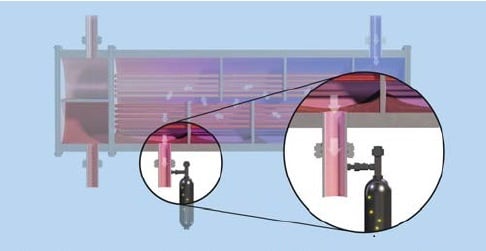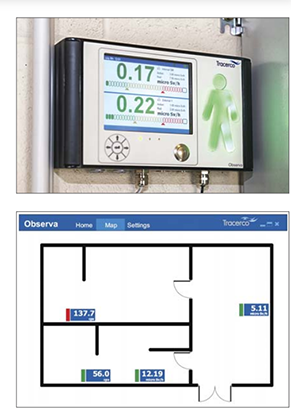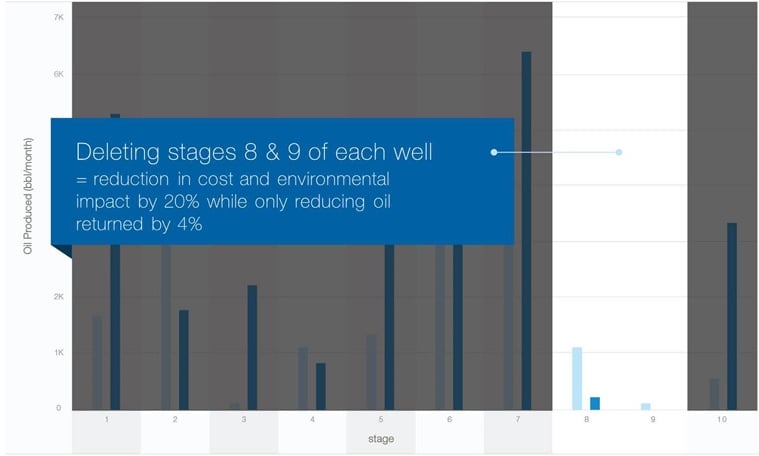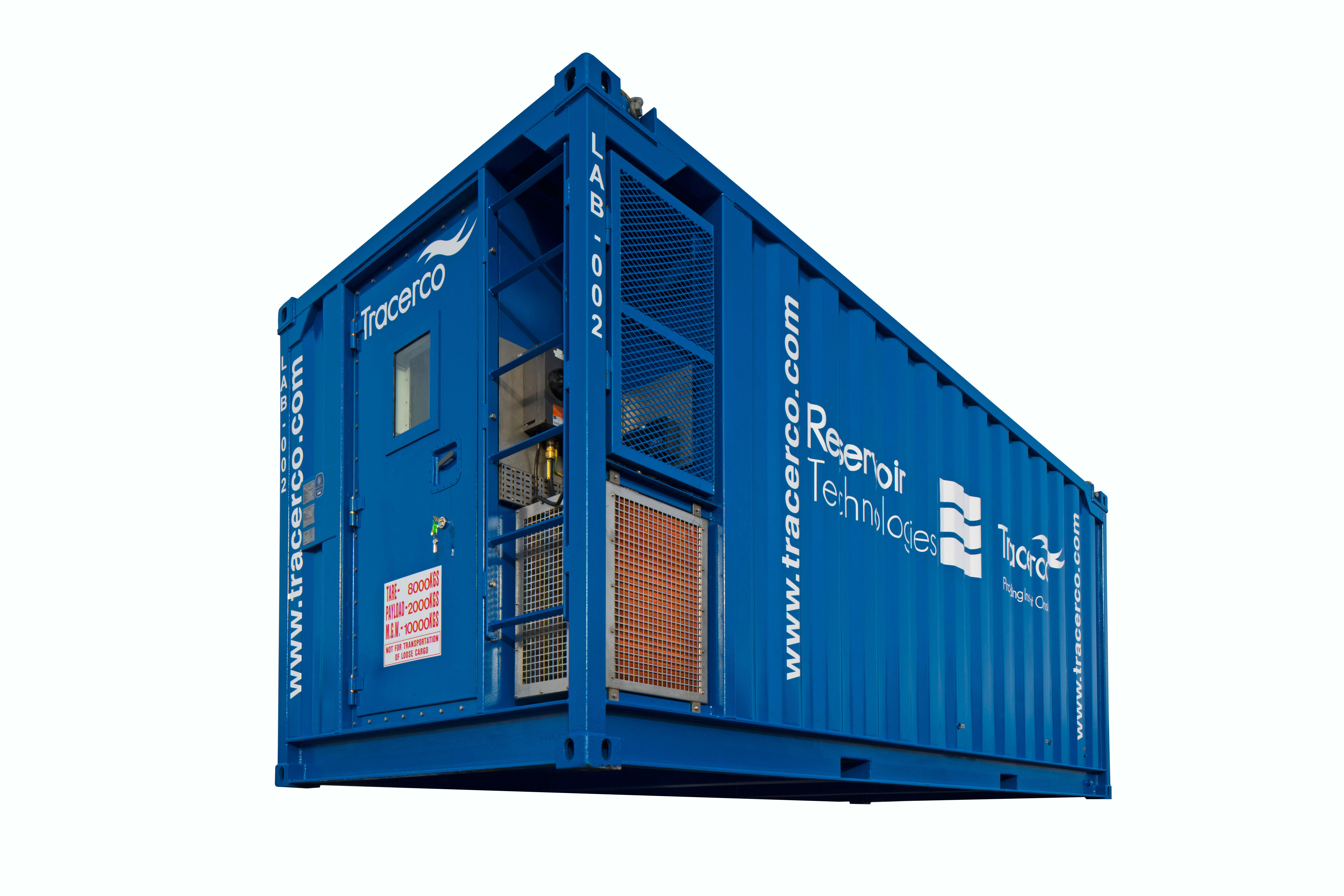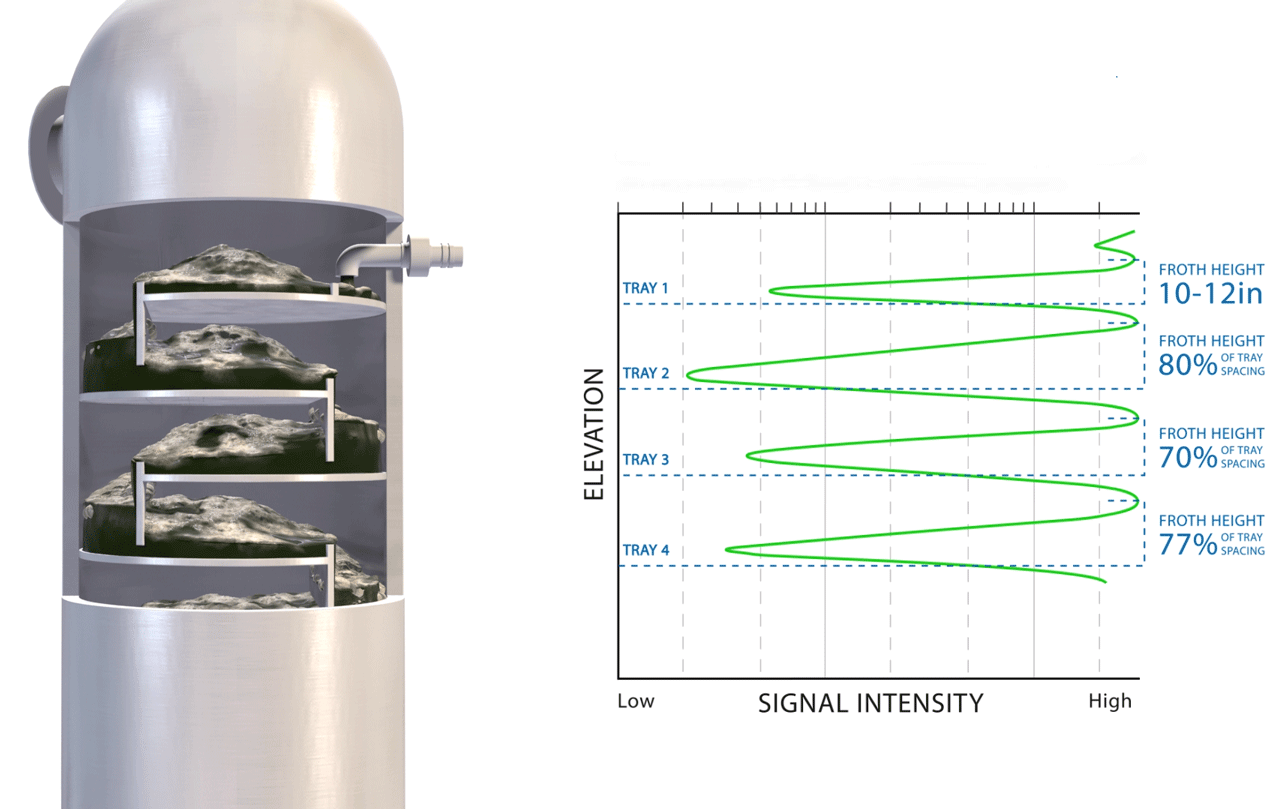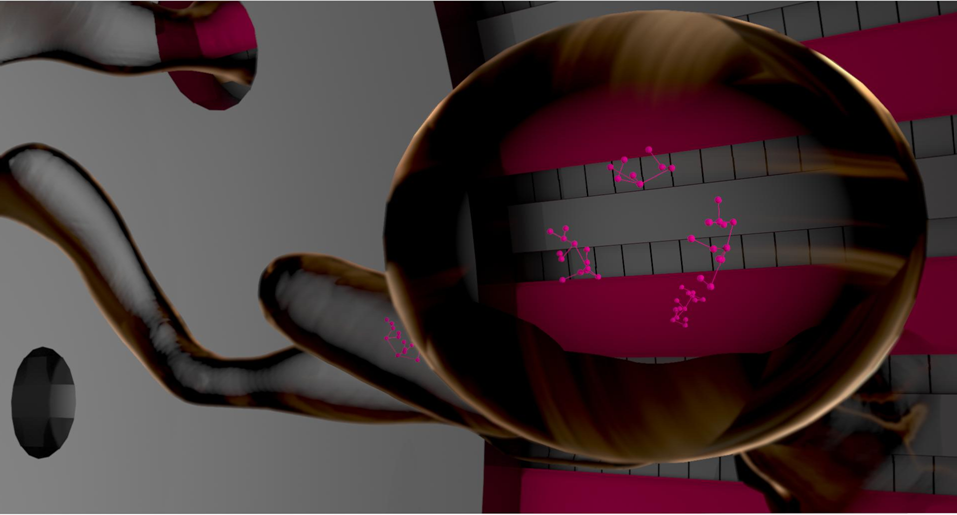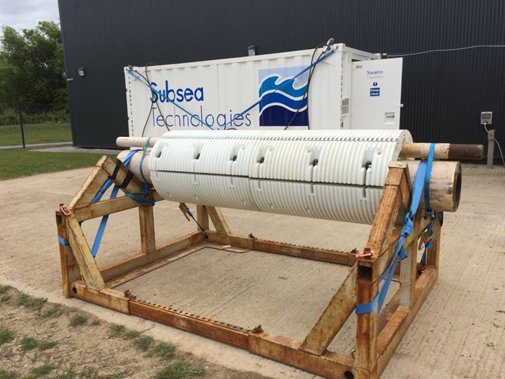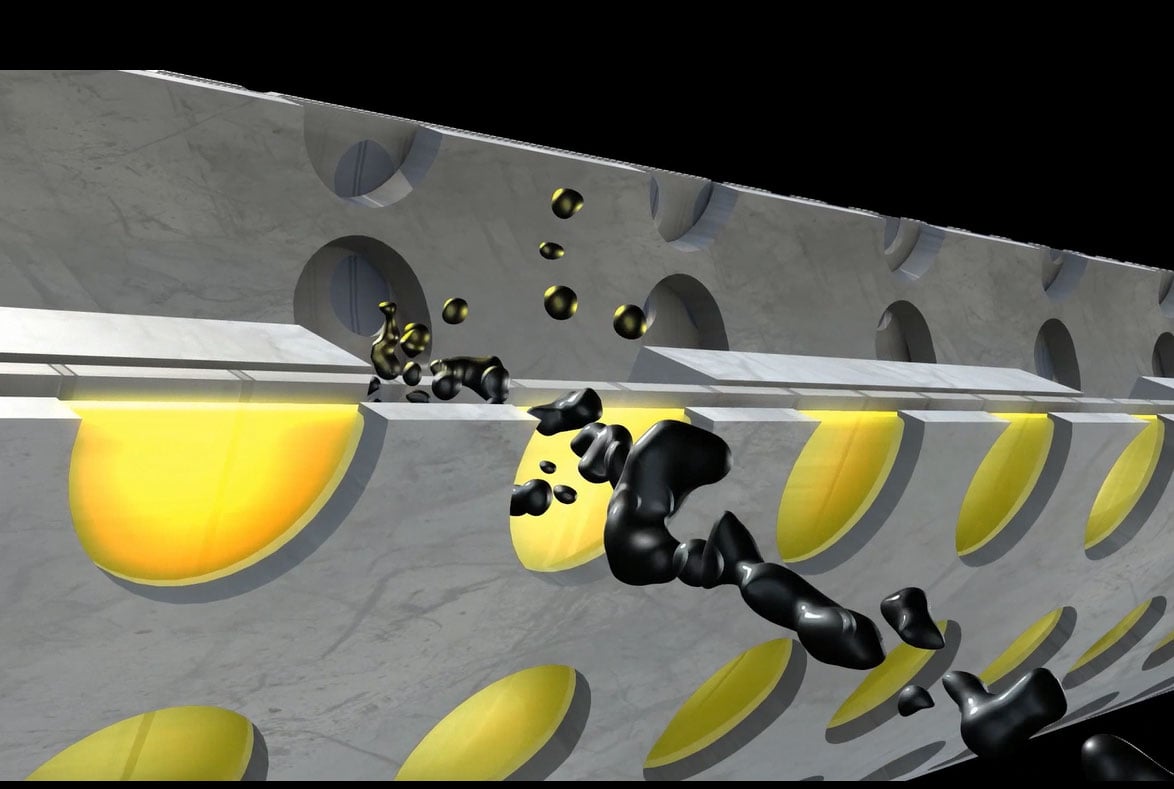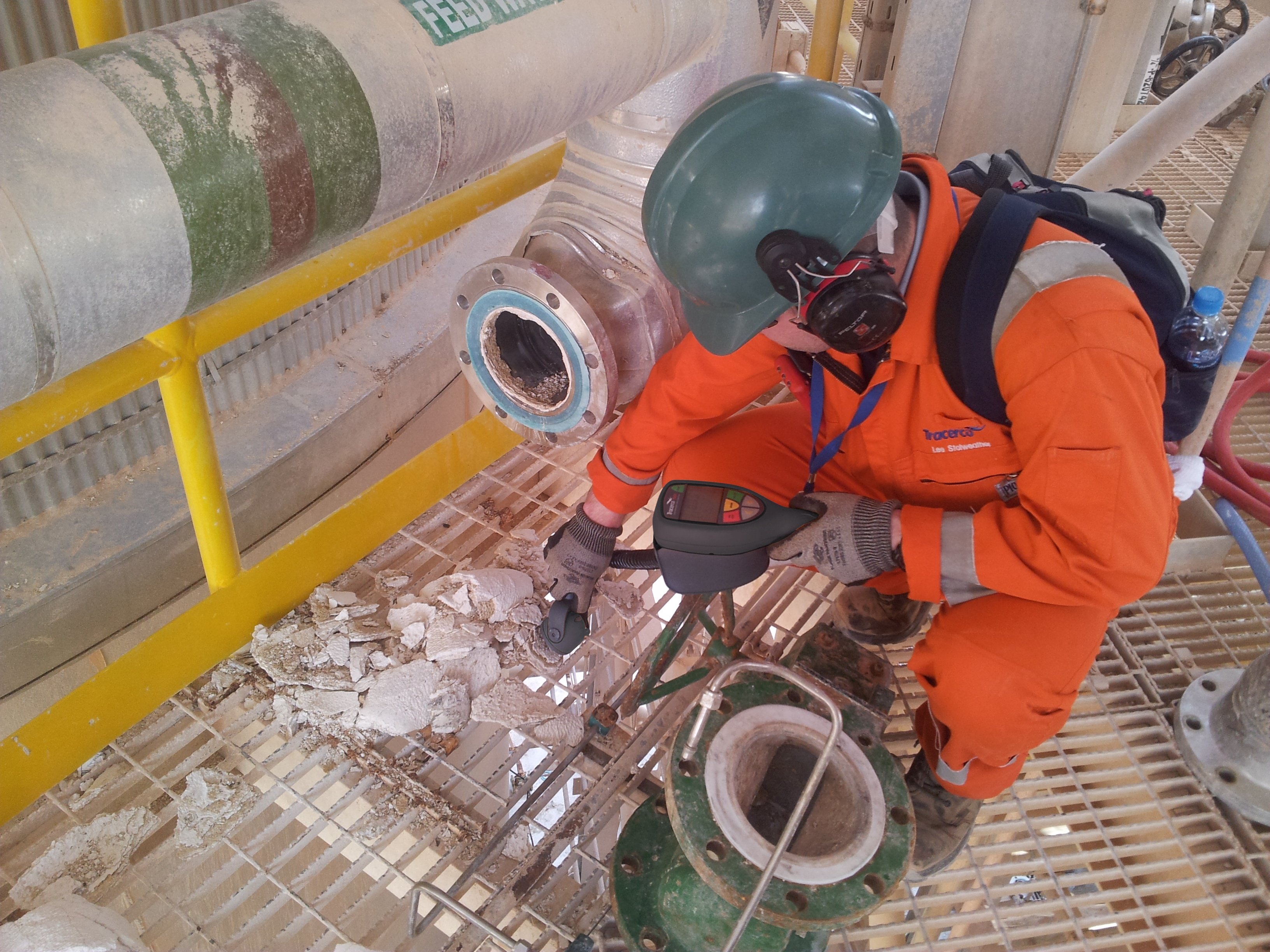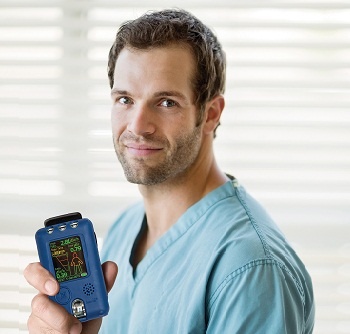Detecting and identifying small leaks in heat exchangers can be an extremely difficult and time consuming task for many operators and plant personnel. Product quality, process efficiency and the time and cost associated with maintenance and potential shutdowns caused by a leaking vessel can have a significant and detrimental impact on production and process operating margins.
Tracerco
Recent Posts
How to minimise maintenance costs with exchanger leak testing: case study
Posted by Tracerco
Mar 15, 2016 10:30:36 AM
Topics: optimising plant processing, chemical tracers, Process Diagnostics, exchanger, Gamma Scanning, Tru-Scan, leak testing, plant performance, heat exchangers, leaking exchangers, small leaks
How to ensure radiation safety and source security with fixed area monitoring
Posted by Tracerco
Feb 29, 2016 8:58:47 AM
Radiation safety and source security is becoming an increasing concern across all market sectors, with the illegal possession and illicit movement of radioactive sources having potentially severe consequences to site workers and both national and global communities. A necessary precaution taken by numerous facilities to ensure source security is the use of fixed area radiation monitors which provide the dose rate levels of source storage bunkers and Non-Destructive Testing (NDT) radiography bays.
Topics: radiation, radiation monitor, radiation detection, radioactive source security, observa, fixed monitoring, source theft, area monitoring, source security, radiation safety
In the challenging market conditions that we face today, reducing lift costs is paramount. One area where this can be achieved is through stimulation optimisation, ensuring reduce spend on stimulation activities and maximum oil or gas flow for a particular field.
In this post we examine five steps to achieving savings of as much as 20% in reservoir stimulation costs by using accurate flow data to optimise stage stimulation in individual wells and development of unconventional fields.
This is based on our vast experience across numerous fields and the insights and figures are taken from real projects conducted over the last few years.
Topics: unconventional wells, reservoir, reservoir analysis, reservoir characterisation, drilling, technology enabling cost savings, reservoir stimulation
Saudi Arabia, Russia, and Australia: Taking reservoir analysis to you
Posted by Tracerco
Feb 17, 2016 1:20:40 PM
Tracerco is tailoring our offering to meet the needs and challenges of our customers with five brand new tracer labs to analyse reservoir samples.
Topics: Tracerco innovations, chemical tracers, unconventional wells, reservoir, fracking, controlled release, flow profiling, reservoir analysis, tracer analysis, interwell
How to optimise the performance of your trayed columns: case study
Posted by Tracerco
Dec 9, 2015 10:12:34 AM
There are a number of problems that can cause a loss of efficiency and lead to loss of production in a distillation column, including tray damage, flooding, weeping, and foaming. Gamma scan technology available from Tracerco can be utilised to locate the origin and/or severity of these problems. A Tru-Scan™ across the active area of a fractionation tray can provide hydraulic conditions and/or mechanical status of the active area, such as weeping and tray froth heights. FrothView™, a new methodology developed by Tracerco, provides a quantitative analysis of tray capacity as the total froth height on a tray that is measured using Tracerco's new detector technology and software interpretation.
In this latest blog post we will discuss how a Tru-Scan™ and FrothView™ technology was used to provide the % tray space to show the amount or percentage of available tray spacing that is occupied by froth or aerated liquid. Knowledge of the actual process conditions inside a vessel, provides engineers with the ability to make process adjustments accordingly.
Topics: Process Diagnostics, Gamma Scanning, Tray Capacity, Tru-Scan, Column Performance, FrothView
The top five questions we are asked about our controlled release reservoir tracers
Posted by Tracerco
Oct 1, 2015 8:03:43 AM
In this blog post we will highlight and discuss the top five questions we are asked with regard to our controlled release tracer technology.
Topics: reservoir, controlled release, reservoir analysis, reservoir characterisation, fluid inflow
Take one minute to give feedback on subsea asset integrity inspection
Posted by Tracerco
Sep 10, 2015 1:48:15 PM
Topics: pipeline inspection, pipeline integrity, Flowlines, Asset Integrity, Subsea Technologies, new technology
Six steps to making savings in reservoir inflow monitoring
Posted by Tracerco
Aug 20, 2015 10:26:00 AM
The oil and gas industry is faced with difficult trading times and low oil prices are predicted to continue. Operators and service companies are faced with lower margins and less capital available when making decisions on reservoir production strategies. Working with reduced resource is difficult enough, but production targets still must be met.
In order to meet these challenges a number of different innovative technologies have been developed and tested in the field that assist with reservoir production optimisation at reduced costs when compared to conventional methods. As an example, the use of speciality chemical technologies can eliminate the need to carry out costly production logging and gain critical data on fluid flow which in turn can be used to optimise development plans.
The technologies can measure clean out efficiency, pinpoint areas of fluid flow, and ultimately log production rates from various zones. All of this data can be obtained throuhg reservoir tracers without the need for intervention the cost of which can run into the hundreds of thousands or even millions of dollars when looking at a sub-sea development. What’s more, this data can be taken on-stream and over several years, saving on rig time as the technology is integrated down hole when running the lower completion into the well.
Below we will examine the steps you can take applying this alternative technology to make significant savings on rig time.
Topics: reservoir characterisation, technology enabling cost savings, fluid inflow, reservoir production modeling, tracers
What to consider when using the NORM Monitor-IS for field based NORM work
Posted by Tracerco
Aug 20, 2015 10:05:48 AM
Oil and gas professionals are continuously faced with the problem of identifying NORM and safely working in NORM contaminated environments. In this blog post we will discuss how to identify the most appropriate radiation survey meter for field based NORM work and how the Tracerco NORM Monitor-IS can effectively meet your NORM screening challenges and requirements.
Topics: Naturally Occurring Radioactive Material, NORM Monitor-IS, NORM Detection, NORM, NORM Management, NORM Survey Meters
Radiation Safety in Nuclear Medicine is as easy as 1,2,3 with the Tracerco Personal Electronic Dosimeter (PED) Family
Posted by Tracerco
Aug 3, 2015 9:09:43 AM
Every day, professionals working in Nuclear Medicine are faced with the on-going challenge of managing and limiting exposure to radiation, not only for themselves but also for visitors and patients. In this blog post we will discuss how detecting, measuring and monitoring radiation dose rates through the use of our extended family of PEDs can ensure a safe radiation culture in a medical environment and allow medical staff to effectively implement best practice solutions.
Oil and Gas Comment and News
Tracerco's news and comment on measurement and diagnostics in Oil & Gas and processing industries
Tracerco brings comment, news, how tos and more on their blog. Sign up for regular notifications of new posts.
Subscribe to Email Updates
Recent Posts
Posts by Topic
- reservoir (18)
- reservoir characterisation (17)
- Gamma Scanning (16)
- chemical tracers (16)
- Flow assurance (15)
- Tru-Scan (15)
- gamma scan (15)
- people (15)
- pipeline inspection (15)
- Discovery (14)
- Process Diagnostics (14)
- employee recognition (14)
- pipeline integrity (14)
- tracers (14)
- Life at Tracerco (13)
- Subsea Technology (13)
- Working Lives (12)
- subsea flowlines (12)
- Colleague Forum (11)
- subsea pipelines (9)
- Asset Integrity (8)
- Explorer (8)
- Subsea Inspection (8)
- Subsea Integrity (8)
- Tru-Grid Scan (8)
- liquid distribution (8)
- nucleonic instrumentation (8)
- Awards (7)
- PackView Analysis (7)
- fluid inflow (7)
- optimising plant processing (7)
- packed bed towers (7)
- quantitative analysis pack beds (7)
- reservoir analysis (7)
- unconventional wells (7)
- Distillation Column Performance (6)
- Liquid maldistribution (6)
- Process Diagnostics Technology (6)
- Suspected maldistribution in packed beds (6)
- desalter optimization (6)
- excessive flare flow (6)
- flare system tracers (6)
- fracking (6)
- interwell (6)
- packed column (6)
- pipe in pipe (6)
- pipeline blockage (6)
- pipeline life extension (6)
- process diagnostics technologies (6)
- tracer technology (6)
- CT scanner (5)
- Separator (5)
- Subsea flexibles (5)
- Tracer Study (5)
- Tracerco Profiler (5)
- Tracerco innovations (5)
- distillation column maintenance (5)
- gamma scanning distillation columns (5)
- inflow measurement (5)
- packed bed performance analytics (5)
- packed bed scan (5)
- pipe bundles (5)
- pipeline extension (5)
- plant processing (5)
- radiation monitor (5)
- smart tracers (5)
- tracerco diagnostics (5)
- tray fouling (5)
- water inflow (5)
- CT scanning (4)
- NORM (4)
- NORM Management (4)
- Subsea Technologies (4)
- chemical leak test (4)
- chemical tracer technology (4)
- density of liquid (4)
- fcc diagnostics (4)
- fcc troubleshooting (4)
- fcc unit process (4)
- fccu studies (4)
- feed/effluent heat exchangers (4)
- fluid catalytic cracking unit (4)
- fugitive flare flow (4)
- gulf of mexico (4)
- hydrocarbon separation train (4)
- instrumentation (4)
- instrumentation control (4)
- multiphase separation (4)
- north sea (4)
- nucleonic instrument (4)
- oil inflow (4)
- online leak detection (4)
- process control (4)
- radiation (4)
- scanning technology (4)
- tower gamma scan (4)
- tower scanning (4)
- trayed tower (4)
- unconventional oil and gas (4)
- water production (4)
- Column Performance (3)
- Decommissioning (3)
- Downstream (3)
- Flow Study (3)
- Flowlines (3)
- FrothView (3)
- NORM Detection (3)
- Naturally Occurring Radioactive Material (3)
- Packed Beds (3)
- Radiation Protection (3)
- Radiation Protection Adviser (3)
- Tray Damage (3)
- adulterated fuel (3)
- brand authentication (3)
- brand protection (3)
- brand security (3)
- catalyst bed wash (3)
- consumer protection (3)
- controlled release (3)
- counterfeit detection (3)
- delayed coke drum (3)
- desalting (3)
- distillation column (3)
- distillation column scan (3)
- distillation column scanning (3)
- distillation tower scanning (3)
- enhanced interface control (3)
- exchanger bundle leak testing (3)
- fcc cracking (3)
- fcc services (3)
- fcc unit (3)
- fiscal tax recovery (3)
- flare flow (3)
- flare gas flow measurement (3)
- flare gas flow meter (3)
- flare study (3)
- fluid catalytic cracking diagnostics (3)
- fluid catalytic cracking services (3)
- frac wells (3)
- gamma ray inspection (3)
- gas processing (3)
- increase production rates (3)
- increased separator efficiencies (3)
- inflow (3)
- injected water (3)
- leak detection (3)
- leak tests (3)
- manage turnaround costs (3)
- mature offshore field (3)
- monitor wash bed coking (3)
- neutron backscatter (3)
- nucleonic technology (3)
- off spec product (3)
- oil & gas (3)
- oil processing (3)
- optimising oil and gas production (3)
- optimising plant production (3)
- packed column performance (3)
- packing mal-distribution (3)
- ped (3)
- personal electronic dosimeter (3)
- process condition monitoring (3)
- process systems (3)
- product quality (3)
- profiler (3)
- radiation detection (3)
- radiation safety (3)
- revenue protection (3)
- separator performance (3)
- technology enabling cost savings (3)
- tomography scan (3)
- tower scan (3)
- trayed columns (3)
- turnaround critical path project (3)
- turnaround planning (3)
- turnaround schedules (3)
- turnarounds (3)
- verify flow meters (3)
- water breakthrough (3)
- waterflood (3)
- waterflood injection (3)
- well development (3)
- wellbore (3)
- Catalytic cracking (2)
- Damage to vessel internals (2)
- Depropanizer scan tray damage (2)
- Engineering (2)
- Events (2)
- Flooded Memeber Inspection (2)
- Flow distribution (2)
- High temperature plant processing (2)
- Houston events (2)
- INWED22 (2)
- Imagine the Future (2)
- International Women in Engineering Day (2)
- Inventors and Innovators (2)
- Level+ (2)
- Maths (2)
- PhaseFinder (2)
- Radiation Waste Adviser (2)
- SAGD (2)
- SRU Unit (2)
- STEM (2)
- Science (2)
- Subsea (2)
- Sulphur Recovery Unit (2)
- TENORM (2)
- Technology (2)
- ThruVision scan (2)
- Tracerco technologies (2)
- Tray Capacity (2)
- Upstream (2)
- Women in STEM (2)
- Women in engineering (2)
- annular liquid distribution (2)
- area monitoring (2)
- authentication (2)
- baseline scan (2)
- brand protection technology (2)
- coke (2)
- coke buildup (2)
- coke deposits (2)
- coke drum (2)
- coke drum cycle (2)
- coke drum optimization (2)
- coker optimization (2)
- column troubleshooting (2)
- counterfeiting (2)
- cracking unit (2)
- desalter (2)
- dose rate (2)
- dosimeter (2)
- drilling (2)
- employees (2)
- exchanger (2)
- fcc (2)
- fcc process (2)
- fcc riser (2)
- fcc units (2)
- fccu process (2)
- fccu unit refinery (2)
- fixed monitoring (2)
- flare flow measurement (2)
- flare flow meter (2)
- flare flowrate data (2)
- flare gas meter (2)
- flare gas meters (2)
- flare lines (2)
- flare measurement (2)
- flooded trays (2)
- flow profiling (2)
- flow rate calculations (2)
- flowrate (2)
- fouling (2)
- fouling deposits (2)
- fuel fraud (2)
- gas flow meter proving (2)
- gas meter proving techniques (2)
- inflow tracer (2)
- insights (2)
- leaking exchangers (2)
- level detection devices (2)
- liquid restriction (2)
- marketing (2)
- mechanical integrity (2)
- monitoring (2)
- monitors (2)
- observa (2)
- oil in water (2)
- oil production (2)
- pigging (2)
- pre-turnaround scans (2)
- process diagnostics systems (2)
- process equipment (2)
- process vessels (2)
- product authentication (2)
- product protection (2)
- reservoir production modeling (2)
- residual oil saturation (2)
- safeguard brand equity (2)
- safeguard brand quality (2)
- safety (2)
- safety awareness (2)
- safety stand-down (2)
- separator study (2)
- shale (2)
- shale production (2)
- small leaks (2)
- solids buildup (2)
- stuck pig (2)
- tracer analysis (2)
- water tracer (2)
- well communication (2)
- work safe home safe (2)
- workplace safety (2)
- Ammonia converter (1)
- Be Safe (1)
- Blockages in perforated plates (1)
- CCS (1)
- CCUS (1)
- CDU (1)
- Carbon capture and storage (1)
- Carryover (1)
- Column Flooding (1)
- Demulsifier Chemical (1)
- Digital Marketing (1)
- EHS (1)
- EHS behaviour (1)
- EHS culture (1)
- EPD (1)
- Entrainment (1)
- FCCU (1)
- FMD (1)
- FMI (1)
- Global exchange (1)
- H2S Absorber (1)
- Heavy oil (1)
- InDepth (1)
- Intercat (1)
- Life cycle management (1)
- NORM Monitor-IS (1)
- NORM Survey Meters (1)
- OTC (1)
- PSV (1)
- Physics (1)
- Platform Members (1)
- Platform Memeber Integrity (1)
- Platform Structural Members (1)
- SEO (1)
- Suspected maldistribution (1)
- ThruVision (1)
- Tracerco Day (1)
- Tray weeping (1)
- Water Ingress (1)
- Weeping (1)
- activities (1)
- adulteration (1)
- authentication solutions (1)
- authentication, product authentication (1)
- beer column (1)
- brand (1)
- brand protection tehnology (1)
- butadiene condenser (1)
- butadiene purification unit (1)
- calibrate flow meters (1)
- catalyst loss (1)
- celebration (1)
- coker units (1)
- counterfeit fuel (1)
- critical path (1)
- critical path planning (1)
- crude distillation unit (1)
- crude unit (1)
- crude vacuum tower (1)
- debutanizer (1)
- desalter maldistribution (1)
- desalter performance (1)
- distillation column service (1)
- distillation tower scan (1)
- distribution study (1)
- education (1)
- electronic personal dosimeter (1)
- environmental reporting (1)
- exchangers (1)
- extraction tower (1)
- fcc addition systems (1)
- fcc additives (1)
- fcc reactor (1)
- flare gas measurement (1)
- foam profile (1)
- fouled trays (1)
- fouling accumulation (1)
- fracture diagnostics (1)
- fuel adulteration (1)
- fuel marker (1)
- fuel marker technology (1)
- fuel marking (1)
- fuel smuggling (1)
- fugitive emissions (1)
- gamma ray inspection distillation (1)
- gamma scan distillationcolumns (1)
- gammatrac (1)
- gas flow meter prover (1)
- gas plant (1)
- gas undercutting (1)
- grout monitoring (1)
- health and safety (1)
- heat exchanger (1)
- heat exchangers (1)
- interface levels (1)
- leak study (1)
- leak testing (1)
- leaking pressure safety valve (1)
- leaking psv (1)
- liquid carry-over (1)
- liquid liquid extractor (1)
- marker systems (1)
- mass transfer diagnostics (1)
- medical (1)
- mental wellbeing (1)
- mobile tracer labs (1)
- new technology (1)
- oil residence time test (1)
- outdoor fun (1)
- personal dosimetry (1)
- pig run (1)
- pig tracking (1)
- pig tracking services (1)
- plant performance (1)
- polymer tracer technology (1)
- polymerisation (1)
- popcorn polymer (1)
- pre-turnaround planning (1)
- pressure safety valve (1)
- process optimisation (1)
- process pipes (1)
- product assurance (1)
- providing insight onsite (1)
- radioactive source security (1)
- radiography (1)
- reactor cyclone (1)
- reactor distributor (1)
- reactor riser (1)
- reactor stripper (1)
- real-time insights (1)
- real-time measurement (1)
- refining (1)
- refractory depth (1)
- refractory lined pipes (1)
- refractory lined vessels (1)
- refractory loss (1)
- refractory measurements (1)
- regenerator cyclone (1)
- remaining oil saturation (1)
- reservoir fluid inflow (1)
- reservoir stimulation (1)
- responsive design (1)
- riser reactor (1)
- risers (1)
- safety behaviour (1)
- safety culture (1)
- safety education (1)
- separation tower scanning (1)
- separator systems (1)
- shutdown planning (1)
- shutdowns (1)
- source security (1)
- source theft (1)
- tower performance (1)
- trayed extraction tower (1)
- wash bed optimization (1)
